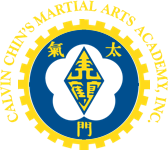Lion Dance
The lion dance is most commonly associated with the Chinese Lunar New Year, although it is performed throughout the year at many celebrations, holidays and festivals. In the Chinese tradition, the lion dance is essential to ensure harmony and prosperity. In its early history, lion dance was performed by actors and dancers. Today, this ancient custom is mainly kept alive by martial artists from traditional kung fu schools. Due to numerous championships in Asia and North America, lion dancing has now reached new heights in its popularity. Traditional lion dancing has evolved into a spectator sport replaced by dare-devil acrobatic feats, rivaling any circus performance. There is even a movement to include lion dance competition as an Olympic event.
Legends of the origins of lion dancing can be found in ancient Chinese literature. Although there are many accounts, the following version is the most familiar. It relates to three hundred years ago in a small Chinese village terrorized by an unusual creature that always appeared on New Year’s Eve. Frightened of the beast, villagers confined themselves to their homes while the beast foraged through their fields. One year, the villagers retaliated by making their own version of a beast, made up to look like a brightly colored lion. As New Year’s Eve approached, two men maneuvered the man-made lion while other villagers followed, beating on metal pots and pans to scare away the beast. As the legend goes, this commotion caused the beast to retreat back to the mountains, never to be seen again. The scene would be recreated by the villagers every New Year’s Eve in commemoration. This custom was later adopted by others and came to symbolize the cleansing of evil spirits lingering from the old year, bestowing only good fortune in the new year.
Martial artists have their own account of the origins of lion dancing, also dating back to the mid 18th century. Their version takes place in the southern Guangdong (Kwangtung) province of China, where a fierce lion would appear out of the mountains, terrorizing the villagers and causing great destruction. The villagers sought the help of masters from many martial arts systems throughout the neighboring villages. Expeditions into the mountains were organized to fight off this enemy lion. As with all accounts, good eventually overcomes evil, and they gained victory. In celebration, they constructed a lion costume. The masters wore the costume and incorporated their martial arts skills into a victory dance. This account supports the close association of lion dancing and martial arts.
While lion dancing takes on many forms today - folk custom, dance drama, and competition, it is the martial arts form that continues to entertain while it imparts life's lessons. To the martial artist, it is an extension of the arts and incorporates various skills and techniques. The lion dance identifies survival and the balance of hardship and joy. The performers' goal is to consume "the greens", generally a head of lettuce. This is accomplished through complicated staging representing the obstacles one faces in life to reachfulfillment. The lion, portraying the human spirit must contemplate and find a successful route in seeking its goal. In an uplifting exhibition, the lion proves success through ingenuity and perseverance.
Calvin Chin’s Martial Arts Academy offers traditional lion dance classes as a unique cultural enrichment program. This comprehensive program is for youths and adults enrolled in Kung Fu or Tai Chi at the academy. It involves learning the choreographed sequence, performing in a costumed lion head, as well as practicing the traditional Chinese instruments that accompany the lion. Participants train for performances at various functions and festivities.

